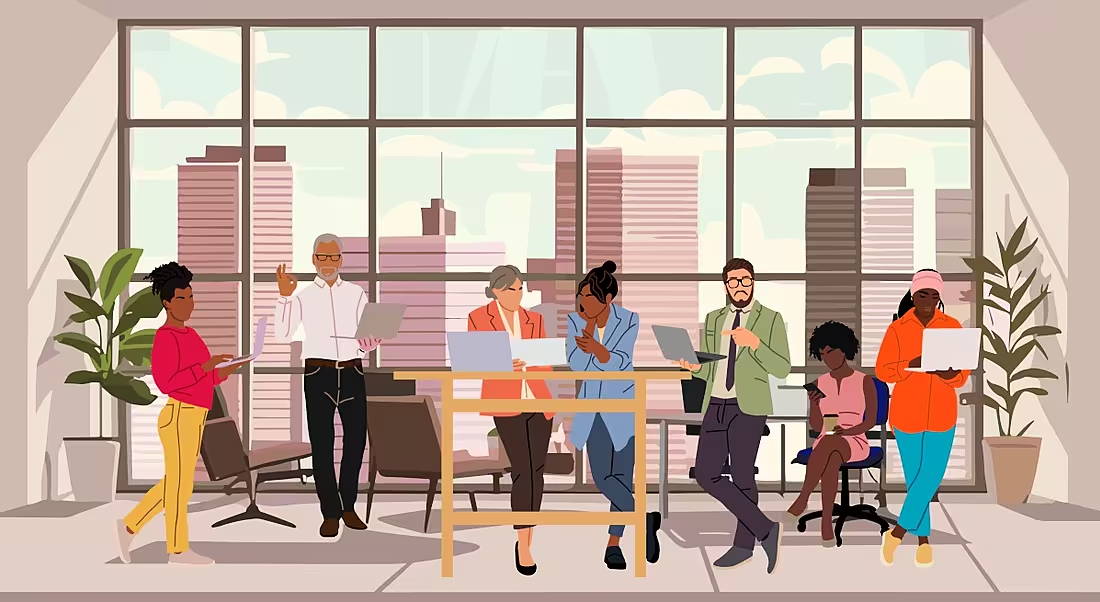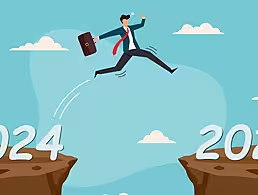As people continue to live longer, the expectations of work and the working environment are shifting. From a wellbeing point of view, what does this mean for the individual?
From the youngest of the Silent Generation, all the way through to Gen Z, the workforce is benefitting from the contributions of five different age groups. Nowadays, life expectancy is considerably higher than it would have been 100 years ago. Not only that, but the pace at which the population is ageing has also increased, as research suggests that by 2030 as many as one out of every six people will be over the age of 60.
Whether it is a personal choice or a financial necessity, many people are electing to stay on at their place of work well past retirement age, essentially changing the dynamics of the workplace. From older employees embracing new tech and offering the benefit of their experience, to younger workers developing their own leadership skills through reverse mentoring, a diverse workplace is key to creating a culturally rich and healthy environment.
That being said, transformations within the workplace, even positive changes, can be disruptive, particularly when groups of people with greatly differing life experiences are pushed together. “The way we work is evolving, people expect more from their careers,” explained Ciara Spillane, a leadership and management lecturer at the UCD Professional Academy and the founder of Positive Prospects, a professional development platform.
“They are looking for support, a sense of meaning and choice. At the same time work has become more volatile and complex to navigate. On top of all of this, we are now working longer than before, we enter the workforce in our early 20s and may not retire until our 70s.”
The 100-year life
For Spillane, longevity of life is greatly altering how we engage with work. She noted the potential for people to make significant career and life changes rather than settling, as previous generations may have. “The 100-year life gives lots of opportunities for younger people. Knowing that we are likely to be working for more than 50 years, it allows more time to change careers, pivot to completely new areas and retrain later in life,” she said.
In line with the increased lifespan, technology has advanced to the point that people of all generations and walks of life have a greater opportunity to flourish within the workforce. Whereas employees who lacked technical ability may previously have fallen to the wayside, the gift of having more time has enabled people of all abilities to train, upskill and advance, in a rapidly changing world.
For Spillane, as young people navigate their careers and age up within the workforce, balance can be achieved by acknowledging where you are in life rather than by trying to have everything all at once.
“Understanding the season you are in is about recognising that your focus will change over the course of your career. It’s about acknowledging that there are times when you need to prioritise work, times when you need to focus on family and times when you simply need to rest and recharge.
“This way, during times of career growth, your work-life balance might be more skewed towards work and during times where your personal life is more important, you may lean back from working so much.
“This is particularly important during the 100-year life as we have longer to work, which means we can take chunks of time out to focus on what is important to our lives at a particular time.”
Sustainable change
There is no doubt that workplace dynamics are changing irrevocably and that in a few decades the face of the working world is going to look very different. Just look at how much has changed in the few short years since the pandemic. What’s important is that organisations and the individual be prepared to make the necessary changes in a sustainable way.
For Spillane, it isn’t a case of re-inventing the wheel, rather there are a number of relatively straightforward routes companies can take to ensure that employees, whether they are days or decades into their career, are not neglected or ignored.
For example as traditional hierarchies change and the talent shortage continues, organisations should make use of older employees, who may be available for flexible work. Additionally, in light of changing attitudes and an emphasis on unbiased hiring, she is of the opinion that employers should prioritise skill over formal qualifications and address any issues of age-related bias.
“A continued focus on the wellbeing of employees at all career stages is essential. This includes mental, physical and emotional health initiatives tailored to diverse needs.”
Looking to the future, Spillane predicts a rise in the popularity of lifelong learning, particularly in the realm of technology and skills, that will complement long careers. She stated that many people will have longer professional lives as “working beyond retirement will become more common, with people starting brand-new careers after their traditional retirement age”.
There may also be the introduction or ‘returnships’ where retired people return to the workforce on a fractional basis. Ultimately, Spillane foresees a change to traditional career paths, in line with a workforce that has been altered by changing values and workplace attitudes.
“The traditional linear path from education to work to retirement will need to be reevaluated. Instead, a more fluid and flexible approach will be necessary, allowing workers to move in and out of different phases of work, education, and leisure throughout their lives.”
Don’t miss out on the knowledge you need to succeed. Sign up for the Daily Brief, Silicon Republic’s digest of need-to-know sci-tech news.




